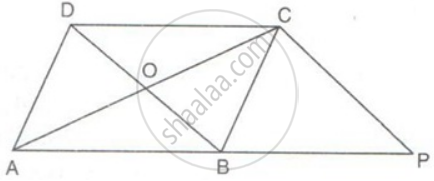Advertisements
Advertisements
प्रश्न
P is a point on side KN of a parallelogram KLMN such that KP : PN is 1 : 2. Q is a point on side LM such that LQ : MQ is 2 : 1. Prove that KQMP is a parallelogram.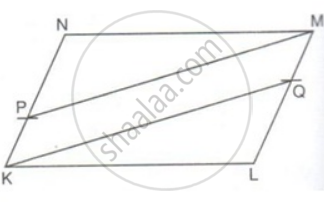
उत्तर
KP = `(1)/(3)"KN"` ...(since KP : PN = 1 : 2)
MQ = `(1)/(3)"LM"` ...(since LQ : MQ = 1 : 2)
But KN = LM ...(opposite sides of parallelogram KLMN)
⇒ `(1)/(3)"KN" = (1)/(3)"LM"`
∴ KP = MQ ..........(i)
Also,KN || LM
⇒ KN || MQ .......(ii)
From (i) and (ii)
KP = MQ and KP || MQ
Hence, KQMP is a parallelogram.
APPEARS IN
संबंधित प्रश्न
ABCD is a parallelogram. P and Q are mid-points of AB and CD. Prove that APCQ is also a parallelogram.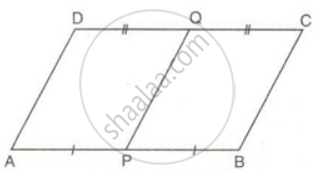
ABCD is a rectangle with ∠ADB = 55°, calculate ∠ABD.
Prove that if the diagonals of a parallelogram are equal then it is a rectangle.
In a parallelogram PQRS, M and N are the midpoints of the opposite sides PQ and RS respectively. Prove that
PMRN is a parallelogram.
In the given figure, PQRS is a parallelogram in which PA = AB = Prove that: SAQB is a parallelogram.
In the given figure, PQRS is a trapezium in which PQ ‖ SR and PS = QR. Prove that: ∠PSR = ∠QRS and ∠SPQ = ∠RQP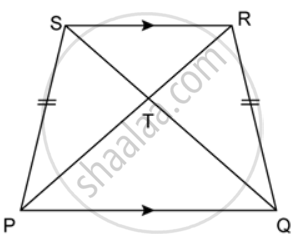
Prove that the diagonals of a parallelogram divide it into four triangles of equal area.
In ΔABC, the mid-points of AB, BC and AC are P, Q and R respectively. Prove that BQRP is a parallelogram and that its area is half of ΔABC.
In ΔPQR, PS is a median. T is the mid-point of SR and M is the mid-point of PT. Prove that: ΔPMR = `(1)/(8)Δ"PQR"`.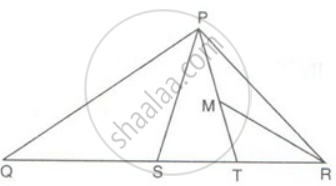
In the figure, ABCD is a parallelogram and CP is parallel to DB. Prove that: Area of OBPC = `(3)/(4)"area of ABCD"`